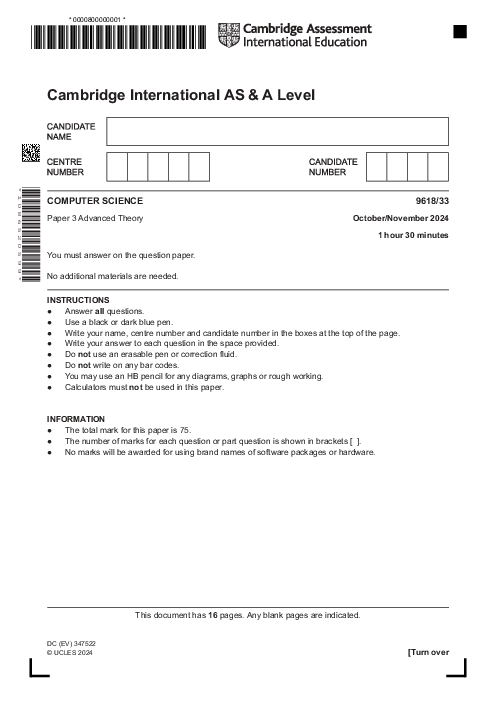Computer Science 9618,33 Oct Nov 2024
Laura Bellini
1. Binary Floating-Point Representation | Converting decimal numbers to normalized binary floating-point format, interpreting stored binary values, and applying two’s complement representation.
2. Reduced Instruction Set Computing (RISC) | Identifying key characteristics of RISC architecture, such as simple instructions, fixed-length encoding, and register-based operations.
3. Circuit Switching in Networks | Explanation of circuit-switched data transmission, benefits like consistent latency, and drawbacks like inefficient bandwidth usage.
4. TCP/IP Protocol Stack | Layered interaction in networking, detailing functions of the Application, Transport, Internet, and Link layers.
5. Hashing in File Storage | Purpose of hashing algorithms for fast data retrieval, collision resolution techniques such as chaining and open addressing.
6. User-Defined Data Types | Defining sets in programming, declaring a set to store mathematical operators, and applying pseudocode syntax.
7. Boolean Algebra and Karnaugh Maps | Writing sum-of-products expressions, completing K-maps, and simplifying logic expressions using Boolean algebra.
8. Memory Management and Performance | Explanation of segmentation, causes and effects of disk thrashing in virtual memory systems.
9. Object-Oriented Programming - Pet Class | Designing a class for pet records, defining private attributes, constructors, and accessor methods.
10. Syntax Diagram and BNF Notation | Translating syntax diagrams into Backus-Naur Form (BNF) rules, designing a password rule with constraints.
11. Binary Trees and Linked List Representation | Constructing a linked list for a binary search tree, completing node pointer structures, and implementing search algorithms.
12. Algorithm Implementation and Optimization | Writing pseudocode for searching a binary tree, ensuring efficiency and correct traversal logic.
See More Paper 3 10 months ago
Computer Science (9618) Subject directory
All resources in one place
Related Past Papers
Related Tutorials
Crash report
